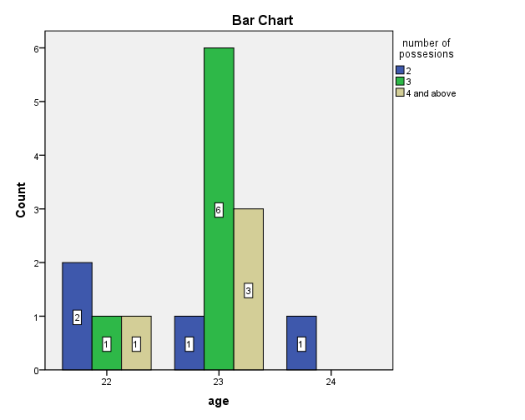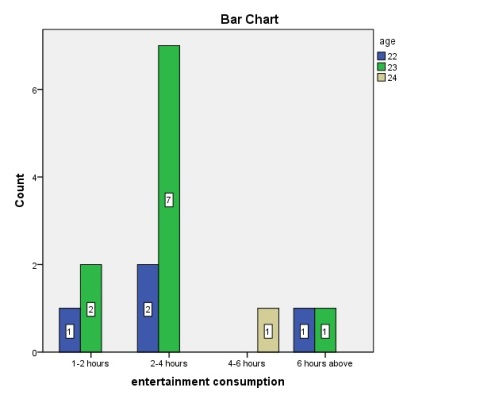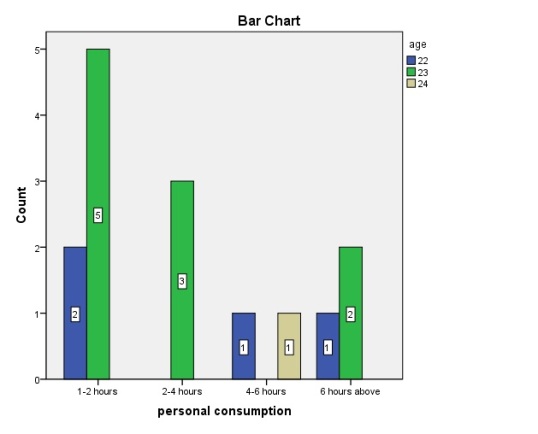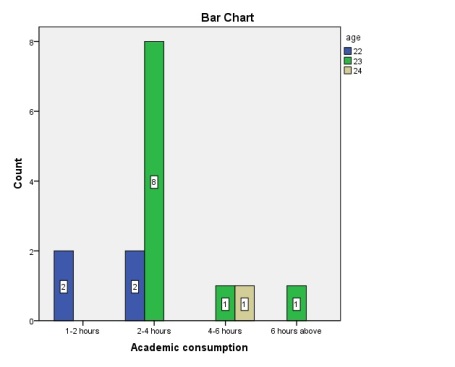We all have in mind that there is the notion of ‘digital divide’ or ‘digital inequality’ (DiMaggion & Hargittai, 2001) concerning on the idea that there was unequal patterns in terms of new media use around the globe. Unequal patterns of consumptions of new media is not always straightforward as it was complex, therefore it is important to have clear figure on what basis the inequality exists in, on what dimensions and so on.
Hence, this week our article will talk about the increasing usage of new media and the time that have been spent on consumption of the new media. The 21st century have brought a new era – an information era, where information is everywhere. The catalysts that have brought this development of flexibility of information are all thanks to new media. New media according to Socha and Eber-Schmid, (n.d) consist of two elements where their further explain as following;
“New media consists of two crucial elements; firstly the digital media and another one the online media. The new media, sometimes, referred as ‘digital media’ and ‘online media,’ can be defined as ‘all that is related to internet and the interplay between technology, images and sound’ ”.
The new media are such as Internet for example have helped people around the globe not just to communicate, but also to share knowledge of their culture, ideology, politics, entertainment and their lifestyle. We can see it through social media such as Facebook or Twitter, web engine (Google and Yahoo), entertainment website or blog (E! news online, online news and bloggers).
Hence in conducting our study, we selected 3 groups (ageofthegeeks, dreamwingirls, and fivecloud) including us, which consists of 15 students of Anthropology and Sociology in UNIMAS who are taking the course SSK 3054 New Technologies of Human Communication in 2014/2015 session. In doing so, we prepare a set of questionnaire. Our main focus is to look at the number of possession and time consumption of the new media. We then compare their number of possession of new media and how much time their spent on the new media based on three elements; entertainment, education and personal . We did not specify or define the three elements in the questionnaire, as we want to know how they define those elements, each on their own.
In this case, we are looking at age factors where we want to see whether or not that does age bring any impact in determine the number possession of new media. Most of people will say that older people have less possession of new media compare to younger people as some of older people did not follow up with the technology trend. Lets see a video of experiment from TheFineBros where they look at how elder people react of video games – the flappy bird
Sources: TheFineBros (2014)

Online Insight (2014) stated that age plays vital role in decision making of the selection of new media, as they found in their survey that different cluster of age have different device preference for web surfing. Realizing this matter, we are trying to see the relationship between age and media possession among our respondent.
Figure 1 showed the correlation between the factor of age and the number of new media ownership among our respondents. Our respondents divided into three groups of age, 22 years old, 23 years old and 24 years old. These three groups are the only available age groups since most of these fellows are the same batch study as ours in the class. Those who are from the age group of 22, two of them possessed two new media devices, while another two respectively owned three and four new media. From the age group of 23 years old, with the total of 10 respondents, 60% of them possessed the number of three new media devices, while another three respondents owns four new media. Only single respondent from the age group of 23 possessed duo-new devices. There is only one respondents comes from the age group of 24, and this respondents possessed 2 new media devices, comprises of laptop and smartphone.
In determine what actually influence each age group for number of possession in new media, we decided to include three factors; entertainment, academic and personal. We will look at their time consumption in each factors.

Based on Figure 2, for entertainment time consumption, out of 4 students age of 22, 1 respondents spent 1 to 2 hours, 2 respondents spent 2 to 4 hours, and 1 respondents spent more than 6 hours. While students age of 23, out of 10 respondents, 2 respondents spent 1 to 2 hours, 7 respondents spent 2 to 4 hours and 1 spent more than 6 hours. One respondents for the age of 24 spent 4 to 6 hours for entertainment.

Figure 3 indicated the personal time consumptions based on the three age groups. For 22 years old, 2 respondents spent 1 to 2 hours, 1 respondents spent 4 to 6 hours and 1 student spent more than 6 hours. In division of 23 years old, 5 respondents spent 1 to 2 hours, 3 respondents spent 2 to 4 hours and 2 respondents spent more than 6 hours. While, one respondents for the age of 24 spent 4 to 6 hours for personal.

Based on Figure 4, it depicted the academic time consumptions. Out of 4 respondents for 22 years old division, 2 respondents spent 1 to 2 hours and the other 2 spent 2 to 4 hours. For the age 23, majority spent 2 to 4 hours, 1 respondents spent 4 to 6 hours and 1 respondents spent more than 6 hours. The respondent for the age of 24 spent 4 to 6 hours for academic purpose.
FINDINGS AND CONCLUSION
In terms of the kind of new media device possessed by different age group, our study showed that age does not really brought any significant to determine the inequality in terms of possession across age group. Our results showed that the younger student possessed more new media than the older students. The factors are mostly influenced by the reasons or purpose of using those new media. In this case, we used three elements; entertainment, academic and personal.
As we can see from Figure 2, Figure 3 and Figure 4, younger people (aged 22 and 23) spent most of their time in those three elements with student in age 23 years old dominate the highest value in each figure. Even so, the older student (age 24) also have the highest value in time consumption for each element where the respondent spent 4 to 6 hours for each factors.
Whilst in Figure 1 we can see that older student (age 24) possessed less number of new media, which is 2 and the younger student (age 22 and 24) have a greater possession of new media where most of them possessed more than 3. This could be argue due to two factors. First, the gap between this age group is really close and therefore their media possession is more or less the same. Second, our study have an inequality of number of respondent in age as there are higher respondent from the younger division than the older which mean we can not make a generalization whether age play a role in media possession.
Hence, in this case, we conclude that age does not really bring significant or impact in possession of new media, but it also need to be stressed that our study does not really bring a solid prove as we have problems in balancing the number of respondents and gap age.
REFERENCES
DiMaggion, P., Hargittai, E., Celeste, C & Shafer, S. (2001). From unequal access to differentiated use: A literature review and agenda for research on Digital Inequality. Report for Russell Sage Foundation. Retrieved from http://www.eszter.com/research/pubs/dimaggio-etal-digitalinequality.pdf.
Online Insight (2014). Mobile devices and marketing. Retrieved March 22nd, 2015, from http://www.burstmedia.com/assets/pdf/BurstMedia_OnlineInsights_Aug2014.pdf.
Socha, B. & Eber-Schmid, B (n.d.). What is new media? Retrieved March 6th, 2015, from http://www.newmedia.org/what-is-new-media.html.
TheFineBros. (2014, February 20) . Elders react to flappy bird [Video File]. Retrieved from https://www.youtube.com/watch?v=OfYkzcOjxz8
http://
This work is licensed under a Creative Commons Attribution-NonCommercial-ShareAlike 4.0 International License.
Good choice of scope in presenting this topoc.
I do agree that age is factor that differenciates the purpose and time of usage.
LikeLiked by 2 people
do you mind to share your opinion on how age differentiates the purpose and time of usage?
LikeLike
This is interesting! Kids especially have a higher possession to technology than older people. I bet there are some kids nowadays, who are supposedly too young to have social media accounts, are addicted to Instagram and Vine and any other apps.
But yeah, overall, age doesn’t really bring significance because pretty much everyone in the digital age today depend on technology, especially in colleges and universities.
LikeLiked by 1 person
I could not agree more. Even my nephew and niece who are age 4 and 2 respectively already playing with their dads smartphone and tablet.
LikeLike
Agree! even kids below than 12yrs old are addicted to online relationship. Kinda funny! 😛
LikeLiked by 1 person
what do you think about child below 12 years old possessed new media? do you think its good/bad for them?
For me right, in my own experience, i`ve seen negative impact especially for my nephew as I can see he is not learning anything from his dad smartphone. However, I can see that some school have use new media in a better way such as provided computer lab for education purpose. what do you think? 🙂
LikeLike
Most of cases are possessed the negative impact. Till up to one point they used it for surfing porns. It’s just disgusting! Even i’m scared to introduce the new media technology to my niece/nephew. Since i don’t have lil sis/bro. Haaa. 😀
LikeLiked by 1 person
hahaha. you can actually monitor their web activities by filtering their search. Even so, trust me they will eventually bound to find something ‘darker’ in internet. That is, unavoidable. Trust me, i have seen some crazy shit in internet.
LikeLiked by 2 people
ever since in school days, the school has always using some software to avoid the students to search some websites. haha. the things that we know only Google/Yahoo. so noob!
LikeLiked by 1 person
hahaha, i can totally relate to that. I even used internet explorer back in the day, how time have passed 😀
LikeLiked by 2 people
How time flies. haha. thanks God as least now i can do more than before. 😛
LikeLiked by 1 person
very good information.. follow our blog https://dreamwingirls.wordpress.com/
LikeLiked by 1 person
thanx nisa!! haha, nice way to promote your blog 😉
i`m in fact following your blog!
LikeLiked by 1 person
Kids, teenagers, and young adults are probably the majority of people who overtake the Internet. Some of them are even smart enough to become entrepreneurs. Take Youtubers for example. They use Youtube as their probably lifelong career to share their passions with the world and earn money. They even have their schedules booked with video shooting, editing, collaboration with other Youtubers, merchandising, tours, meetups, and a lot more to prove the world that they’ve become successful because of the support from their fans, especially kids. Young Internet users watch Youtube videos to support their favourite Youtubers. They would procrastinate to watch a new three plus minute video of Nigahiga’s genius theory rather than sitting at their desks doing math. Compare to a working adult, kids would spend hours and hours scrolling through their social media, creating new status updates or posting new photos, and enjoying new media content. Kids and adults are pretty much a big age gap. Kids have mastered the skill of using technology more than the adults, so it’s true that kids are dominating the clock of their lives just by indulging in the world of screens.
LikeLiked by 1 person
Nowadays it seems to be so easy to become popular. just take a webcam and recorded yourself doing something (cooking, make up tutorial, or yoga) and baam! you earned a lot of money and gained a lot of followers. Celebrity does that, heck even some of the super star in hollywood started their career through social media. Not that i`m complaining but they do produce some bad products (J-bieber, kim kardashian, etc). They so irrelevant and vein, honestly i`m not sure what kind of role model their are but it seems many people are following them *sigh. thanks mich for sharing your view 🙂
LikeLiked by 2 people
interesting findings and love how you conclude it. neutral and not bias. thumbs up for that 🙂
LikeLiked by 2 people
Thank you com-tech. of course! being a social scientist we need to be objective 🙂
LikeLiked by 1 person
[…] mini survey was conducted among our classmates (TheAgeofGeeks group) to understand their online consumption. We have chosen a group of our classmates (consisting of 5 […]
LikeLike